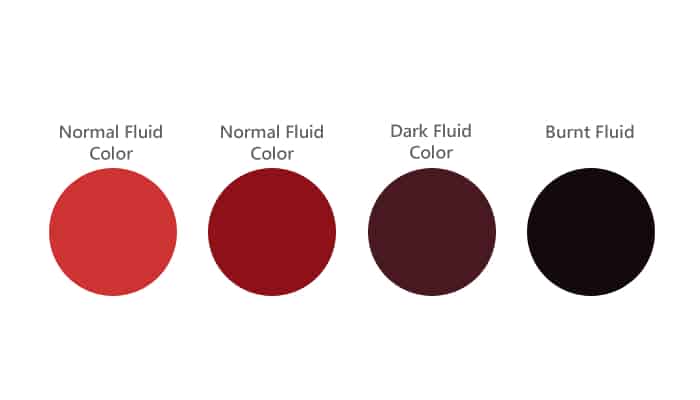Understanding Transmission Fluid for Your Buick LeSabre
When it comes to maintaining your 1997 Buick LeSabre, one of the most crucial aspects is ensuring that the transmission fluid is of the right type. The transmission fluid plays a vital role in the overall performance and longevity of your vehicle’s transmission system. Let’s break down what you need to know about the fluid specifications recommended by the manufacturer.
Manufacturer’s Recommendations
| Popular posts |
|---|
| What to do to prolong the life of your manual gearbox |
| Automatic transmission: what it is, how it works |
For the 1997 Buick LeSabre, the manufacturer specifies the use of Dexron III transmission fluid. This specification is crucial for ensuring that your transmission operates smoothly and efficiently. Dexron III is a type of automatic transmission fluid (ATF) that is designed to provide the necessary lubrication, cooling, and cleaning properties for your transmission.
Why Dexron III?
Using the correct type of transmission fluid is not just a suggestion; it’s a necessity. Here’s why Dexron III is the go-to choice:
- Compatibility: Dexron III is formulated to work with the hydraulic systems in your transmission, ensuring proper shifting and operation.
- Temperature Stability: This fluid maintains its viscosity across a wide temperature range, which is essential for the performance of your transmission, especially in varying driving conditions.
- Wear Protection: The additives in Dexron III help protect against wear and tear, extending the life of your transmission components.
- Oxidation Resistance: It resists oxidation, which can lead to sludge buildup and other issues that can compromise transmission performance.
Fluid Specifications
When selecting transmission fluid, it’s important to pay attention to the specifications. Here are the key details you need to know:
- Type: Automatic Transmission Fluid (ATF)
- Specification: Dexron III
- Color: Typically red or pink, indicating that it is a fresh fluid.
- Viscosity: Designed to provide optimal flow and lubrication at both low and high temperatures.
Where to Find the Right Fluid
You can find Dexron III fluid at most auto parts stores, and it’s often available in both conventional and synthetic formulations. While synthetic fluids can offer better performance and protection, make sure they meet the Dexron III specification.
Final Thoughts on Fluid Type
Using the correct transmission fluid is essential for the health of your 1997 Buick LeSabre’s transmission. Stick to Dexron III as specified by the manufacturer, and you’ll be on the right track to keeping your vehicle running smoothly. Always consult your owner’s manual or a trusted mechanic if you’re unsure about what to use, as the right fluid can make all the difference in performance and longevity.
Recommended Oil Brands for Your Buick LeSabre
When it comes to maintaining your 1997 Buick LeSabre, choosing the right transmission fluid is just as important as knowing the type you need. While Dexron III is the specified fluid, not all brands are created equal. Based on owner feedback and discussions from various automotive forums, here’s a rundown of some of the most recommended brands that have proven themselves in the field.
Owner-Recommended Brands
Many Buick LeSabre owners have shared their experiences with different transmission fluid brands. Here are the top choices that consistently come up in discussions:
- AC Delco: As the original equipment manufacturer (OEM) for GM vehicles, AC Delco’s Dexron III fluid is a popular choice among LeSabre owners. Users report smooth shifting and reliable performance, making it a go-to option for those who prefer sticking with OEM parts.
- Mobil 1: Known for its high-quality synthetic oils, Mobil 1 also offers a Dexron III compatible fluid. Many users appreciate the enhanced protection and performance, especially in extreme temperatures. Owners have noted that switching to Mobil 1 has improved their transmission’s responsiveness.
- Valvoline: Valvoline’s Dexron III fluid has garnered positive feedback for its affordability and effectiveness. Many users have reported that it performs well under regular driving conditions and offers good protection against wear and tear.
- Castrol: Castrol’s transmission fluid is another brand that has received favorable reviews. Owners have mentioned that it provides smooth operation and helps maintain the transmission’s performance over time.
- Royal Purple: For those looking for a premium option, Royal Purple offers a synthetic Dexron III fluid that many users swear by. While it comes at a higher price point, owners claim that the performance benefits, such as improved shifting and reduced heat, make it worth the investment.
What Owners Are Saying
Feedback from forums and owner groups reveals a few common themes when it comes to choosing transmission fluid:
- Performance: Many owners emphasize the importance of performance, especially when it comes to shifting. Fluids that provide a smoother transition between gears are often praised.
- Temperature Resistance: Several users have noted that fluids that maintain their viscosity at high temperatures tend to perform better, particularly in warmer climates.
- Longevity: Owners often mention how certain brands help extend the life of their transmissions. This is a key consideration for those who want to avoid costly repairs.
- Price vs. Quality: While some owners are willing to pay a premium for high-quality fluids, others prefer more budget-friendly options that still meet the Dexron III specification. The consensus is that you often get what you pay for, but there are reliable options at various price points.
Where to Buy
You can find these recommended brands at various retailers, including:
- Local auto parts stores like AutoZone, O’Reilly Auto Parts, and Advance Auto Parts.
- Online retailers such as Amazon and RockAuto, where you can often find competitive pricing and customer reviews.
- Big box stores like Walmart, which may carry popular brands at lower prices.
Final Thoughts on Brand Selection
Choosing the right brand of transmission fluid for your 1997 Buick LeSabre can make a significant difference in performance and longevity. Based on the experiences shared by fellow owners, sticking to reputable brands that meet the Dexron III specification is your best bet. Whether you opt for an OEM product like AC Delco or a synthetic option like Mobil 1, make sure to consider your driving conditions and preferences.
Change Interval for Your Buick LeSabre Transmission Fluid
Maintaining your 1997 Buick LeSabre involves regular transmission fluid changes to ensure optimal performance. Understanding the recommended change interval and the nuances of partial transmission oil changes is crucial for keeping your vehicle running smoothly.
Recommended Change Interval
For the 1997 Buick LeSabre, the general recommendation for changing the transmission fluid is every 30,000 to 60,000 miles (approximately 48,000 to 96,000 kilometers). However, this can vary based on driving conditions and habits. Here are some factors to consider:
- Driving Conditions: If you frequently drive in stop-and-go traffic, tow heavy loads, or operate in extreme temperatures, you may need to change your fluid more often.
- Fluid Quality: If you notice that your transmission fluid appears dark or has a burnt smell, it’s a sign that it needs to be changed, regardless of mileage.
- Owner’s Manual: Always refer to your owner’s manual for the most accurate recommendations tailored to your specific vehicle.
Partial Transmission Oil Changes
In many cases, a full transmission fluid change requires removing the transmission from the vehicle, which can be a labor-intensive and costly process. This is where partial transmission oil changes come into play.
What is a Partial Transmission Oil Change?
A partial transmission oil change involves draining a portion of the old fluid and replacing it with new fluid. This method is often more practical and can be done without extensive disassembly of the vehicle.
Benefits of Partial Changes
- Cost-Effective: Partial changes are generally less expensive than full fluid exchanges, making them a more accessible option for many owners.
- Less Downtime: Since partial changes require less time, you can get back on the road sooner.
- Improved Fluid Quality: Regular partial changes can help maintain better fluid quality over time, as you are consistently replacing some of the old fluid with fresh fluid.
Considerations for Partial Changes
While partial changes can be beneficial, there are some important considerations to keep in mind:
- Fluid Mixing: If you switch brands or types of fluid, mixing different formulations can lead to compatibility issues. Always ensure that the new fluid is compatible with what’s already in the system.
- Not a Complete Solution: Partial changes won’t remove all the old fluid, which can lead to the buildup of contaminants over time. Therefore, they should be part of a broader maintenance strategy.
- Frequency: Depending on your driving conditions, you may want to consider performing partial changes more frequently than full changes.
Statistical Data and Authoritative Sources
According to the Automotive Maintenance and Repair Association (AMRA), regular transmission fluid changes can significantly extend the life of your transmission. Studies indicate that vehicles that undergo regular fluid changes experience fewer transmission failures and repairs.
The National Institute for Automotive Service Excellence (ASE) also emphasizes the importance of maintaining clean transmission fluid, noting that dirty fluid can lead to overheating and increased wear on transmission components.
By adhering to the recommended change intervals and considering partial oil changes, you can help ensure that your 1997 Buick LeSabre remains in good working condition for years to come.
What Color Should Transmission Fluid Be?


